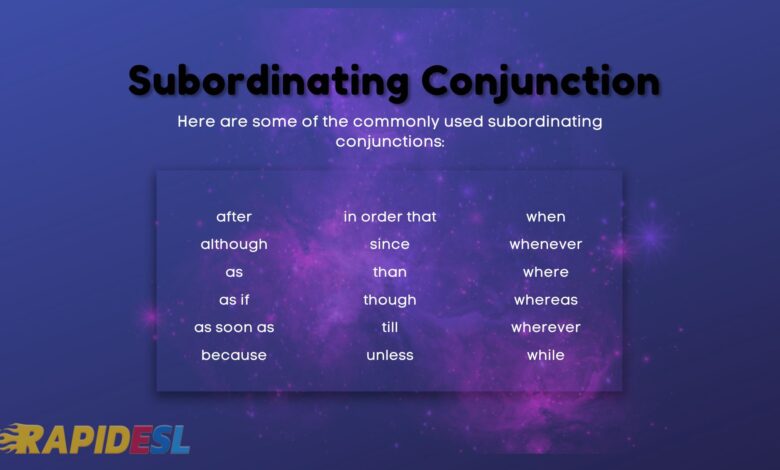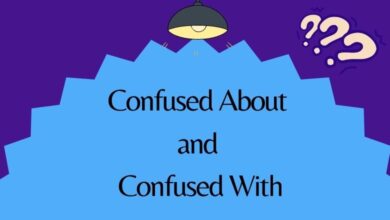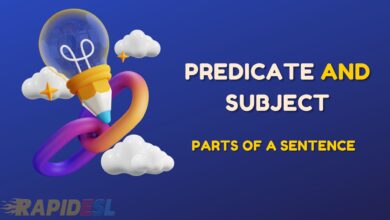
What Are Subordinating Conjunctions?
What Are Subordinating Conjunctions?
Subordinating conjunctions are words that link an independent clause (a complete sentence) to a dependent clause (an incomplete thought). They establish a relationship between the two clauses, indicating time, cause and effect, condition, contrast, and more. By using subordinating conjunctions, you can create compound sentences that express complex ideas.
1. Because:
This conjunction is used to indicate a cause or reason. It explains why something happened for example:
- She stayed home because she wasn’t feeling well.
2. Since:
Similar to “because,” it also indicates a cause or reason. For example:
- Since it was raining, they decided to postpone the picnic.
3. Like:
It is used to draw a comparison between two things or to indicate similarity. For example:
- She dances like a professional.
4. When:
This conjunction is used to indicate a specific time or point in time. For example:
- When the sun sets, the sky turns beautiful shades of orange and pink.
5. If:
It is used to express a condition or a hypothetical situation. For example:
- If you study hard, you’ll pass the exam.
6. As:
Similar to “when,” it also refers to a specific time but can be used more broadly. For example:
- As I was leaving, the phone rang.
7. Although:
This conjunction is used to introduce a contrast or contradiction. For example:
- Although it’s expensive, I want to buy that car.
8. While:
It indicates that two actions are happening at the same time. For example:
- She read a book while waiting for the train.
9. After:
It indicates the order of events, with one action occurring later than another. For example:
- After the movie, we went out for dinner.
10. Before:
Similar to “after,” it indicates the order of events but with the action occurring earlier. For example:
- She always checks her email before going to bed.
11. Until:
It refers to a point in time up to which an action continues. For example:
- I’ll wait here until you return.
12. As soon as:
It indicates that an action happens immediately after another action. For example:
- As soon as he arrived, he started working on the project.
13. Unless:
It expresses a condition that must be met to avoid a negative consequence. For example:
- You won’t succeed unless you put in the effort.
14. In case:
It suggests a precaution or preparation for a possible future event. For example:
- Take an umbrella in case it rains.
15. Even though:
This conjunction is used to introduce a contrast or contradiction, similar to “although.” For example:
- Even though he’s tired, he keeps working.
16. Provided that:
It indicates a condition that must be met for something else to happen. For example:
- You can come to the party provided that you bring a dish to share.
17. So that:
It is used to express purpose or intention. For example:
- She studied hard so that she could get a good grade.
18. As if / As though:
These phrases are used to describe a situation that appears to be true or real but may not be. For example:
- He acted as if he didn’t care.
19. In order to:
It indicates purpose or the reason for doing something. For example:
- She wrote a to-do list in order to stay organized.
20. While:
This conjunction can have multiple meanings, including indicating contrast or simultaneous actions. For example:
- While I understand your point of view, I disagree.
21.Whereas:
It introduces a sharp contrast between two clauses or ideas.
- She prefers tea, whereas I prefer coffee.
22. Now that:
It indicates that something is happening or has happened because of a certain condition. For example:
- Now that you’re here, we can start the meeting.
23. Though:
Similar to “although,” it introduces a contrast or contradiction. For example:
- Though it was late, he continued working.
24. Whenever:
This conjunction is used to indicate any time or every time that a particular event occurs. For example:
- Whenever I see a cat, I smile.
Conclusion
These 24 subordinating conjunctions are essential tools for anyone learning English. By using them correctly, you can add depth and variety to your sentences, making your communication more precise and engaging. Practice with these conjunctions in your writing and speaking, and soon you’ll find yourself expressing complex ideas with ease. So go ahead and experiment with these subordinating conjunctions, and watch your English skills flourish.
Check out other article:





